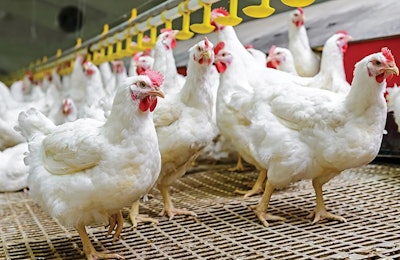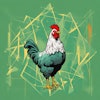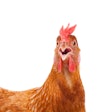
Globalization, climate change, trade barriers and the COVID-19 pandemic have increased volatility and disrupted supply chains across industries and production systems. The complex supply chains of the poultry industry have been particularly challenged as they deal with perishable products, are system-reliant and are expected to continually supply consumers.
Most supply chain setups are optimized for cost-efficiency and not necessarily focused on resilience. Resilience itself is not measurable, or financially accountable, but it has become increasingly important, defining the capacity of a supply chain to survive and retain its basic function in the face of turbulent change.
Yet cost efficiency and resilience are not mutually exclusive - striking a balance between these goals is possible.
Feed, for example, is a key economic factor for poultry producers. Its production has one of the more complex and vulnerable supply chains due to the number of items involved and their typically international sourcing. Suppliers must be able to demonstrate that their supply chains are robust.
Supplier strategy and supply security
Different feed ingredient types require different sourcing strategies.
For example, the availability and quality of the main feed raw materials are impacted by weather conditions that can render a previously preferred source uneconomical. Many raw materials, however, can be sourced from different geographic regions that mitigate the supply risk.
For industrial products, such as feed additives the situation is different.
There is a trend towards an increasing number of key additives being mainly produced in the same region or country. At face value, this may make them less expensive to purchase but increases either the risk of severe shortages if supply chains are interrupted or incur higher inventory costs or working capital to mitigate those risks. In terms of resilience, product type, essential vs. nonessential, as well as the number and geographic location of production units, should be considered when making any purchasing decision.
Supply chain setup
To assess the quality of a supply network, and to identify improvement opportunities, its complexity must be completely transparent. Often, the planning tools and criteria normally applied work fine for making decisions in a steady supply-demand situation but they don’t provide the granularity of information and transparency needed in times of volatility.
Modern planning software, however, makes the flow of goods and their interdependencies visible at any aggregation level - product, customer, country, region - and over any period.
If, for example, product flow lines overlap considerably, and several warehouses are involved in supplying a customer there is an indication that something could be optimized.
From an efficiency point of view, one warehouse alone is optimal for supplying a specific location, yet achieving resilience and maintaining supply security may require buffers and redundancies. They may reduce the efficiency of the individual parts of a supply chain, but they will improve its cost-efficiency as a whole by increasing its robustness and taking out delays and variations.
Attaining resilience requires a systemic view on supply chains and abandoning the concept that such complex systems can be optimized by separately analyzing each element and tuning it to the lowest possible cost level.
Rising to the challenge of sustainably feeding poultry

















